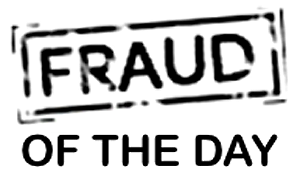In early 2025, Ohio investigators revealed a troubling scheme involving lottery retailers who exploited the trust of their customers to pocket winnings for themselves. What appeared on the surface to be a routine part of everyday life—buying and cashing in scratch-off tickets—was turned into a source of theft and deception.
The fraud centered on convenience store clerks who quietly skimmed winnings from unsuspecting players. When customers presented tickets for validation, clerks would sometimes scan them, see they were winners, and then falsely claim the tickets had “no prize.” Rather than handing back the supposedly worthless stubs, clerks would keep them and later redeem the prizes under their own names or through relatives and friends.
This was not an isolated incident. According to state officials, more than a dozen clerks across several counties participated in the scheme. The fraud varied in scale—from small amounts in the tens or hundreds of dollars, to one case in which a clerk attempted to cash a $50,000 winning ticket. That claim, flagged during a routine review by the Ohio Lottery Commission, ultimately helped unravel the network.
“These weren’t just one-off bad decisions,” said Ohio Attorney General Dave Yost. “It was theft dressed up as customer service. People trusted these clerks to tell them the truth about their tickets, and that trust was cynically exploited.”
The victims were often the most vulnerable players—elderly residents or occasional ticket buyers unfamiliar with how to independently check their winnings. Some individuals went months, or even years, without realizing they had been defrauded. Investigators discovered that clerks deliberately spread out their redemption of fraudulent tickets to avoid detection, attempting to stay beneath the thresholds that trigger automatic scrutiny.
The financial toll of the scheme stretched into the millions. Not only were legitimate winners deprived of their rightful payouts, but state coffers also lost revenue earmarked for education and community programs supported by the lottery. Just as damaging was the erosion of public trust: for every fraudulent clerk, hundreds of honest store employees risked being viewed with suspicion.
In response, the Ohio Lottery Commission announced a multi-pronged initiative to strengthen oversight. Among the measures: increased use of data analytics to monitor retailer redemption patterns, surprise audits at participating stores, and public education campaigns urging players to scan their own tickets at self-service machines or through the lottery’s official mobile app. “A winning ticket belongs to the player—not the retailer,” lottery officials emphasized in a statement.
The case serves as a stark reminder that fraud is not limited to complex cybercrime or elaborate financial schemes. Sometimes, it is as simple—and as damaging—as a lie told across a convenience store counter. When the public loses faith in such small, everyday interactions, the credibility of the entire system suffers.
Today’s Fraud of the Day is based on reporting from the Columbus Dispatch and the Ohio Attorney General’s Office regarding lottery fraud prosecutions in 2025.




